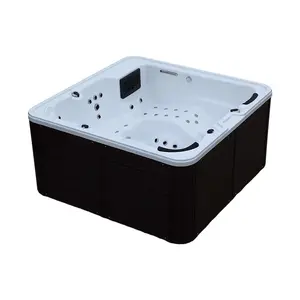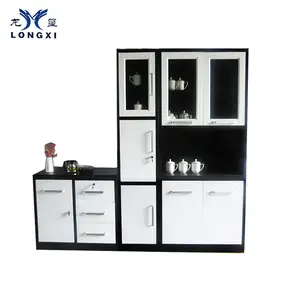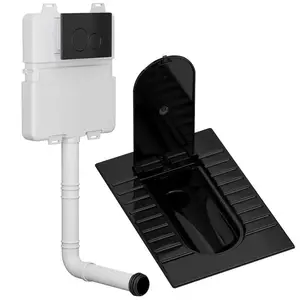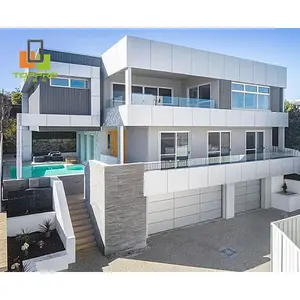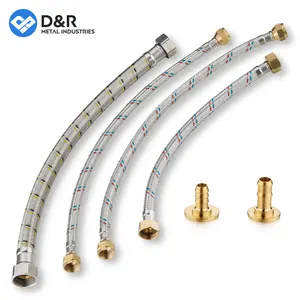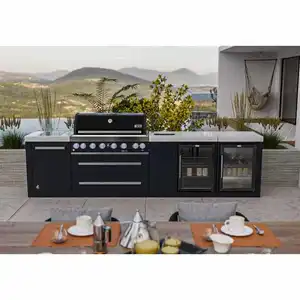Popular in your industry











































































Related Searches:








































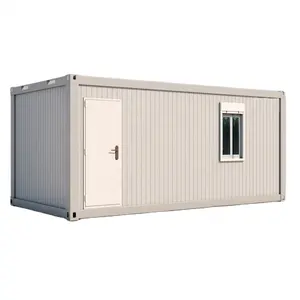


















































































































Top categories
About wood house thailand
Embark on a journey to harmonize with nature through the enchanting world of sustainable living, as we unveil the timeless elegance and eco-friendly allure of premium wood houses from Thailand. These architectural marvels are not just homes but sanctuaries crafted from the earth's gifts, promising a healthier lifestyle intertwined with the cultural richness of Thai heritage. As we delve into the myriad benefits of sustainable living, the artistry of Thai craftsmanship, and the robust yet beautiful materials that make up these abodes, prepare to be captivated by how tradition meets sustainability in the heart of Southeast Asia.
The Allure of Sustainable Living
Living sustainably is not only beneficial for the environment but also for personal health. By choosing products made from natural materials and avoiding harmful chemicals, one can significantly reduce exposure to toxins. This conscious decision can decrease the risk of health issues such as allergies and respiratory problems. Moreover, sustainable living contributes to improved air quality by encouraging practices like using public transportation and supporting clean energy, which can lead to enhanced respiratory health and a lower risk of heart disease.
The mental health benefits of a sustainable lifestyle are equally important. Engaging with nature and incorporating green spaces into daily life have been shown to alleviate stress, anxiety, and depression, promoting a sense of well-being. Making eco-friendly choices, such as selecting products with sustainable certifications, can be a simple yet effective way to contribute to a healthier lifestyle and environment.
Adopting sustainable habits, like reducing energy consumption through energy-efficient solutions and choosing alternative modes of transportation, not only lessens one's ecological footprint but also boosts physical health. Celebrating the principles of Earth Day every day by committing to sustainable living practices can lead to a more fulfilling and health-conscious life.
Exploring Premium Wood Houses from Thailand
Discover the essence of traditional Thai living with the unique charm of teakwood houses. Each house is a testament to the craftsmanship and design expertise, reflecting a deep appreciation for authenticity and cultural heritage. These teak-wood homes are more than mere structures; they embody a lifestyle deeply rooted in Thai tradition, offering an immersive experience into a time-honored architectural style.
The construction of these homes is a delicate process, ensuring that every detail is attended to with care and precision. The result is a living space that stands out for its distinctive aesthetic and structural integrity. Teak, known for its durability and beauty, is the material of choice, providing a foundation that is both strong and visually stunning.
For those intrigued by the allure of these wood houses, further details are available to explore. While each individual's needs and preferences are unique, the commitment to delivering a personalized experience is a constant. The finishing of these homes is a blend of traditional techniques and modern finesse, ensuring that residents enjoy both the timeless appeal of Thai architecture and the comforts of contemporary living.
Types of Thai Wood Used in House Construction
Thailand's forests yield a variety of tree species ideal for house construction, each with unique characteristics. Teak, known for its durability and attractive grain, is a popular choice for its longevity and aesthetic appeal. Rosewood is another durable option, valued for its intricate grain patterns, often used in fine furniture and as a decorative element in homes. For those seeking more sustainable options, Rubberwood and Mango Wood are excellent alternatives. These woods come from trees grown for their primary products, like fruit or sap, with the wood being a secondary benefit, thus supporting more sustainable practices. The hardness and stability of woods like Tampu, Satjatum, and Pradoo make them suitable for structural elements in house construction, offering both strength and a pleasing appearance. The selection of wood for building a house in Thailand involves balancing aesthetic qualities with structural integrity, sustainability, and workability.
Features of Thai Wood Houses

Thai wood houses, a quintessential element of Southeast Asia's architectural heritage, are traditionally built on stilts with a gable roof, reflecting a harmonious blend with nature. Commonly positioned by rivers and oriented towards the water, these structures are crafted from natural materials like unpainted wood or bamboo, exuding an organic aesthetic.
The architectural design of Thai wood houses varies by region, adapting to the local climate and cultural practices. In the north, houses tend to be boxier and larger, while the northeastern homes are more modest and rustic. Southern Thai houses are specifically designed to withstand the heavy rains of the wet season, showcasing the adaptability of wood construction in diverse environments.
A distinctive feature of these houses is the raised terrace, which serves as a versatile space, often becoming the heart of the home as a communal living area. The careful avoidance of planting directly around the house is a traditional practice to ensure clear access to the space underneath, which is utilized for storage or keeping livestock, further emphasizing the practicality of the design.
The Siamese Wooden House, popular in central Thailand, is a classic example that avoids a boxy look through its curving design, demonstrating the aesthetic flexibility of wood as a building material. These features collectively underscore the cultural significance of wood in Thai architecture and its advantages for sustainable living.
Cultural Significance of Wood in Thai Architecture
The traditional Thai house, a testament to the cultural significance of wood in Thai architecture, is a reflection of the nation's diverse regional identities. Each style of these wooden structures, raised on stilts and crowned with steep gabled roofs, encapsulates the social, cultural, and religious customs of its region. In the central plains, the simplicity of the high gable roof with its sun halo center stands out, symbolizing the harmony between nature and living spaces. The northeastern stilt houses, with their narrow windows and singular front door, offer a glimpse into a lifestyle adapted to seasonal agricultural cycles. Meanwhile, the northern Thai houses, with their LAN-NA influences and western decorative elements, showcase a blend of local tradition and foreign interaction. The southern stilt houses, built to withstand the region's stormy weather, feature a mix of local and foreign roof styles, from the basic gable to the storm-resistant PANYA roof, reflecting the adaptation to climatic challenges. These wood houses are not just dwellings but are emblematic of the Thai people's connection to their environment, their history, and their community-centric way of life.
Advantages of Wood Houses for Sustainable Living

The manufacturing of construction materials like steel and concrete is a significant contributor to global carbon emissions. In contrast, wood as a building material offers a sustainable alternative with its lower carbon footprint. Wood's natural properties make it energy-efficient, renewable, and sustainable, which in turn lessens the environmental impact of construction.
Wood is not only efficient but also boasts a strength that surpasses steel when compared by weight. It is resistant to many household chemicals and, with proper care, can outlast many other materials. Its durability is complemented by its aesthetic warmth and flexibility in design.
Timber frames serve as carbon banks, capturing and storing atmospheric CO2, a process known as carbon sequestration. This characteristic of wood helps in reducing the amount of carbon in the atmosphere, aligning with green building guidelines and contributing to a more sustainable lifestyle.
Furthermore, wood houses incorporate features that contribute to energy efficiency. These features, beyond the timber frame itself, help create homes that are not only environmentally friendly but also cost-effective in the long run due to their efficient energy use.
Customization and Design Flexibility
The essence of a Thai Teakwood House transcends the ordinary, offering a unique blend of traditional aesthetics and modern design flexibility. Each house showcased is a testament to the bespoke craftsmanship. The construction of these homes is not a one-size-fits-all affair; it is a tailored experience, ensuring that each dwelling reflects the individuality of its owner. The teak-wood used is not just a material but a canvas for artistry, allowing for a range of customizations that cater to diverse tastes and requirements. The finishing of these houses is a process honed over time, reflecting a commitment to excellence in every detail. For those looking to immerse themselves in the cultural tapestry of Thailand while enjoying a living space that is both unique and personal, these wood houses offer an unparalleled opportunity.
Durability and Maintenance
Thai wood houses, particularly those utilizing teak wood, are renowned for their durability. Teak is celebrated for its strength and resistance to pests like termites, making it an ideal material for long-lasting construction. The traditional Thai house, with its intricate wooden carvings and steep roofs, is not only a testament to the craftsmanship but also to the enduring nature of the materials used. The steep roofs are practical, designed to protect against heavy rainfall and to withstand strong winds, contributing to the longevity of the structure. Maintenance is an essential aspect, especially for houses that are exposed to moisture and require attention to keep the structure stable and prevent water damage. Regular upkeep ensures that these wooden structures can withstand the elements and continue to provide a sustainable living option.
Navigating Alibaba.com for Thai Wood Houses

Exploring the vast selection of Thai wood houses on Alibaba.com reveals a diverse range of prefabricated options, from the rustic charm of wooden villas to innovative pod-style cabins. These wood houses, crafted with various types of Thai wood, offer a blend of traditional aesthetics and modern design. The curved wooden sauna rooms with expansive windows exemplify contemporary outdoor relaxation spaces, while the luxury hotel prefab houses showcase modular design in a compact, efficient footprint.
For those seeking a cultural touch, the medium-sized houses reflecting Phra Phrom or Jesus shrines present a Thai style in their architecture, with teak wood construction adding to their authenticity. The family-use traditional dry steam wooden sauna houses and outdoor cedar sauna houses cater to wellness enthusiasts looking for a personal retreat. Alibaba.com's platform provides a user-friendly interface that allows potential buyers to navigate through these options, ensuring they find a wood house that aligns with their sustainability goals and personal taste.
Customization is a key feature on Alibaba.com, where buyers can tailor their chosen wood house to meet specific design preferences. The flexibility in design extends from the size and layout to the finer details of the woodwork. Durability is also a consideration, with offerings like the prefab houses with solid thick wall and roof panels. The platform's assortment includes space-efficient solutions like the 20 feet folding board rooms, which demonstrate the adaptability of wood houses to various living needs and space constraints.
Conclusion
In conclusion, Thai wood houses stand as a paragon of sustainable living, seamlessly blending the cultural artistry of traditional Thai architecture with the modern pursuit of an eco-conscious lifestyle. From the health benefits of living in harmony with nature to the enduring beauty and strength of teak and other native woods, these homes offer more than shelter—they embody a philosophy of life. The customization and design flexibility ensure that each wood house is as unique as its owner, with durability and maintenance considerations that promise longevity. As we navigate the intersection of sustainability, tradition, and innovation, Thai wood houses emerge as not just a choice but a statement—a commitment to living responsibly without sacrificing beauty or comfort. They are a testament to the fact that one can indeed live sustainably without compromising on luxury or cultural richness, making them a perfect homage to Earth Day, every day.
